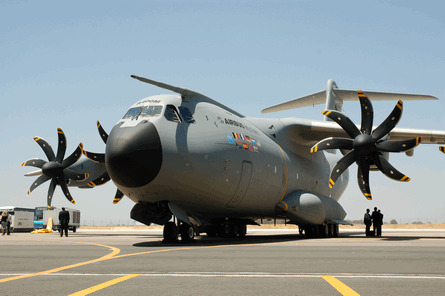Airbus Military's revelation of further delays to the A400M's first flight obscures the timing of future deliveries and reveals new cracks in the relationship between the airframer and its propulsion supplier.
Airbus said the impact of the latest delay for the first flight, originally scheduled in January 2008, upon costs and delivery schedules can only be "reliably assessed" after further discussions with customers.
But the structure of the fixed-price development and production contract for the A400M exposes Airbus to heavy losses due to the costs of a prolonged development cycle and penalty payments by customers for missed delivery targets.
 |
|---|
© Airbus Military |
"This was bound to go horribly wrong," said Richard Aboulafia, an aerospace analyst for the Teal Group. "It is to the best of my knowledge the only single fixed-price contract that covers both the procurement and development phases."
Before the delay announcement, Louis Gallois, chief executive of Airbus parent EADS, reportedly hinted to customers that enforcing penalties for delays could cancel the programme. Industry sources suggest Airbus is unhappy at having to pay the penalties after the customer nations effectively forced it to accept a pan-European engine solution, which has proved unwieldy to manage through the development phase.
Customers are only one source of potential friction within the programme. Safran, a key member of the European consortium providing the TP400-D6 engine, issued a rare public rebuttal to Airbus's announcement of the delay.
Airbus blamed the first flight delay on the "unavailability of the propulsion system". The airframer also said the timing depends on a long-awaited test programme for a TP400-D6 mounted on a Lockheed Martin C-130 flying testbed. Safran, however, said the EuroProp International (EPI) consortium has delivered all of the engines for the programme, and the delay is actually caused by the lack of completed control software for the engines. The software code and the C-130 test campaign, Safran adds, "are the responsibility of Airbus Military".
The 12,000shp (8,940kW) TP400-D6, derated to 10,000shp for the A400M, is the most powerful turboprop engine ever produced by a Western manufacturer. Its full-authority digital engine control is being developed jointly by Safran and MTU Aero Engines, which declines to comment.
The A400M has amassed 192 orders from seven European countries, but the continued development problems have already stifled sales campaigns in Australia and Canada.
Another potential concern for Airbus is the delay's impact on the strategy to introduce the A400M to the North American market.
EADS North America wants the US Special Operations Command to consider the A400M as an alternative to the C-130J to replace dozens of HC/MC-130s. But the timing of decision means that the A400M must be ready to compete as early as late 2009.
TP400 FADEC faces challenges
Industry sources say two main issues have affected the development of the TP400's full-authority engine control.
First, about 100 engineering changes have been made to the airframe since the official design freeze, most of which had an impact on the operation of the engines. Secondly, completion of the FADEC software is dependent on the capture of 30-50h of flight test data aboard the TP400's Lockheed Martin C-130 testbed, which is yet to fly despite the engine having been declared flight-ready several months ago.
Once sufficient test data is available, the sources estimate it would take a further one to two months to complete the FADEC, but longer if any unexpected problems are encountered.
Source: Flight International























